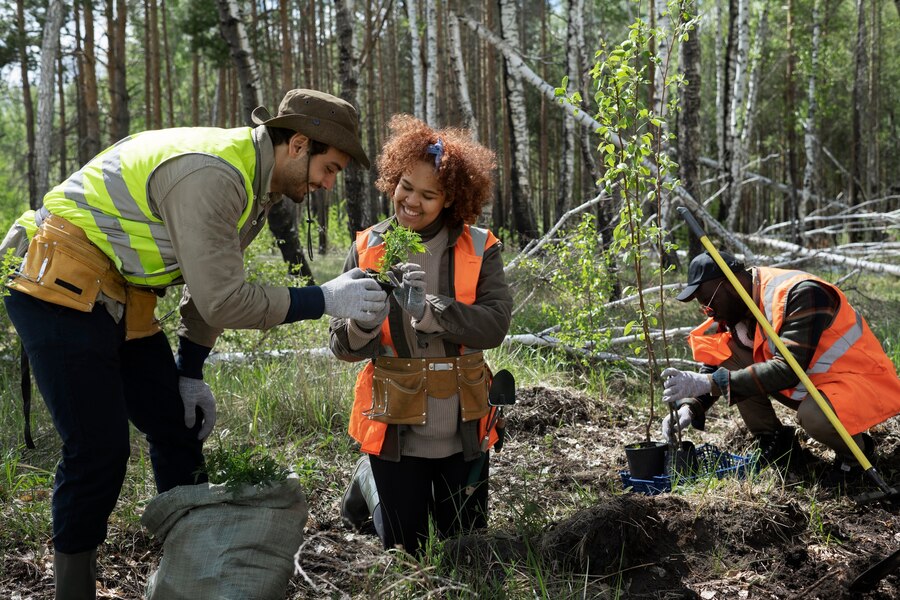
Community efforts in forest preservation
Forests are invaluable ecosystems that support biodiversity, regulate climate, and provide resources and services essential for human well-being. However, rapid deforestation and environmental degradation pose serious threats to forests around the world. In response, communities globally are taking a stand to protect and preserve their forests through grassroots efforts. From local reforestation projects to sustainable forest management, these community-driven initiatives play a critical role in forest conservation, benefiting both people and the planet.
Why community involvement matters in forest preservation
Local communities often have the deepest connection to the forests around them. They depend on these ecosystems for food, medicine, water, and cultural practices, and they possess unique knowledge about the land they inhabit. This firsthand understanding gives them a vested interest in preserving forest health, not only for their immediate needs but also for future generations.
Moreover, community involvement has proven to be highly effective in forest preservation. Studies show that forests managed by local communities often have lower deforestation rates than those managed solely by governments or corporations. Empowering communities to participate in forest management can lead to more sustainable practices, as locals are more likely to respect and care for land they have a stake in protecting.
Key community-driven initiatives in forest preservation
Across the globe, communities are implementing a range of strategies to preserve and restore forests, adapting their approaches to fit local conditions and resources. Some of the most impactful initiatives include:
1. Community-led reforestation projects
Reforestation is a powerful tool for restoring degraded landscapes and improving biodiversity. Many communities are organizing reforestation efforts, planting native trees to rehabilitate forest areas impacted by logging, agriculture, or natural disasters. These projects often involve local residents of all ages, fostering a sense of responsibility for the land.
For example, in Kenya, the Green Belt Movement, founded by Nobel laureate Wangari Maathai, has mobilized communities to plant millions of trees. These efforts not only restore forest cover but also improve soil fertility, provide shade, and create habitats for wildlife. Similarly, in India, the Bishnoi community has long been known for its tree-planting campaigns, a practice rooted in their cultural reverence for nature.
Reforestation efforts are often paired with education programs to teach locals about the importance of biodiversity and sustainable land use. This approach helps ensure that restored areas remain protected and that communities understand the long-term benefits of maintaining healthy forests.
2. Sustainable forest management
In regions where people rely on forests for their livelihoods, sustainable forest management practices allow communities to meet their needs while conserving forest resources. Community forestry, for example, involves local residents in the decision-making processes for forest use, ensuring that resources are harvested responsibly. This approach limits logging to sustainable levels, allows for the regrowth of plants, and protects forest ecosystems.
In Guatemala, the Maya Biosphere Reserve is managed collaboratively by the government and local communities. In this system, residents are allowed to harvest certain forest products under strict guidelines, helping protect the forest while supporting local economies. Similarly, indigenous communities in Canada and the United States have worked with forestry experts to create management plans that balance resource extraction with conservation.
Through sustainable forest management, communities can continue to benefit from forests without exhausting resources. This method empowers locals to become stewards of the forest, fostering a sustainable relationship that respects both their needs and the environment.
3. Protecting biodiversity through conservation zones
In many cases, communities establish conservation zones where no hunting, logging, or farming is allowed. These protected areas serve as refuges for wildlife, preserving biodiversity and ensuring the survival of vulnerable species. Conservation zones are particularly important in regions where biodiversity is under threat from poaching, habitat loss, or invasive species.
In the Amazon, indigenous groups like the Kayapo people have declared large tracts of forest as conservation zones. By enforcing strict rules against hunting and logging, these communities help protect their ancestral lands from external exploitation. Their efforts have preserved some of the most biodiverse parts of the Amazon, providing a safe haven for species and preserving ecosystem functions.
Local monitoring plays a key role in maintaining these zones. Many communities use watch programs or employ forest guardians who patrol their lands, ensuring that outsiders do not violate conservation rules. By taking a hands-on approach, communities effectively guard their forests, preserving them for both ecological health and cultural heritage.
4. Agroforestry and permaculture practices
In areas where agriculture is necessary for subsistence, communities are turning to agroforestry and permaculture to balance food production with forest preservation. Agroforestry integrates trees into agricultural landscapes, allowing farmers to grow crops while maintaining tree cover. This approach reduces the need for clearing forests and provides farmers with additional resources, such as fruit, timber, and firewood.
In Brazil, agroforestry is being adopted in the Amazon to restore degraded land and reduce deforestation. By planting fast-growing trees alongside crops, farmers create multi-layered forests that mimic natural ecosystems. These agroforestry systems enrich the soil, control erosion, and boost yields, offering a sustainable alternative to traditional agriculture.
Permaculture, a practice that focuses on sustainable land use and ecosystem design, is also gaining popularity. In permaculture systems, communities create self-sustaining environments that require minimal intervention, allowing people to coexist harmoniously with nature. By incorporating principles of ecology, permaculture reduces the need for deforestation and improves the resilience of local ecosystems.
5. Educational programs and raising awareness
Education is one of the most effective tools for long-term forest preservation. Community-led educational programs teach residents about the importance of forests, biodiversity, and sustainable practices. Workshops, community meetings, and youth programs help instill a culture of conservation, fostering environmental responsibility among community members.
In Madagascar, where deforestation is a major issue, local NGOs partner with communities to provide education on sustainable farming and forest conservation. By teaching residents about the ecological value of their forests, these programs create a sense of ownership and pride in protecting their natural resources.
In addition to local education, communities are increasingly using social media and digital platforms to raise awareness about forest preservation. These efforts connect communities with the global conservation movement, allowing them to share successes, attract support, and inspire others to take action.
Challenges facing community-based forest preservation
While community-led efforts have proven successful in many regions, they face several challenges. Funding is one of the primary obstacles; many communities lack the financial resources to support large-scale conservation projects or reforestation initiatives. Without adequate funding, it can be difficult to purchase supplies, pay forest guardians, or invest in sustainable agricultural practices.
Legal challenges also arise, especially in areas where land rights are unclear or where governments grant land concessions to corporations. In some cases, communities lack legal ownership of the forests they inhabit, making it difficult to protect them from external exploitation. Strengthening land rights for indigenous and local communities is essential for empowering them to manage and protect their forests.
Finally, climate change poses a growing threat to forests worldwide. Rising temperatures and shifting weather patterns can increase the frequency of forest fires, droughts, and invasive species, all of which endanger forest ecosystems. Community-led initiatives must adapt to these new challenges, developing strategies to protect forests under changing environmental conditions.
The future of community-driven forest conservation
The future of forest preservation depends on empowering communities to become active participants in conservation. Global conservation efforts are increasingly recognizing the importance of local involvement, with governments and organizations supporting community-based projects. International funding programs, such as the United Nations’ REDD+ initiative, provide financial support for community-led conservation and reforestation efforts, encouraging sustainable land management.
Collaboration between governments, NGOs, and local communities will be crucial for the success of these initiatives. By providing resources, strengthening land rights, and promoting education, the global community can support local efforts to preserve forests. As more communities engage in forest preservation, they help create a global network of conservation, protecting forests not only for themselves but for the entire planet.
Community-driven forest preservation shows that protecting nature is not just the responsibility of governments or large organizations. By taking local action, communities can safeguard their forests, create sustainable livelihoods, and contribute to a healthier environment for everyone.
